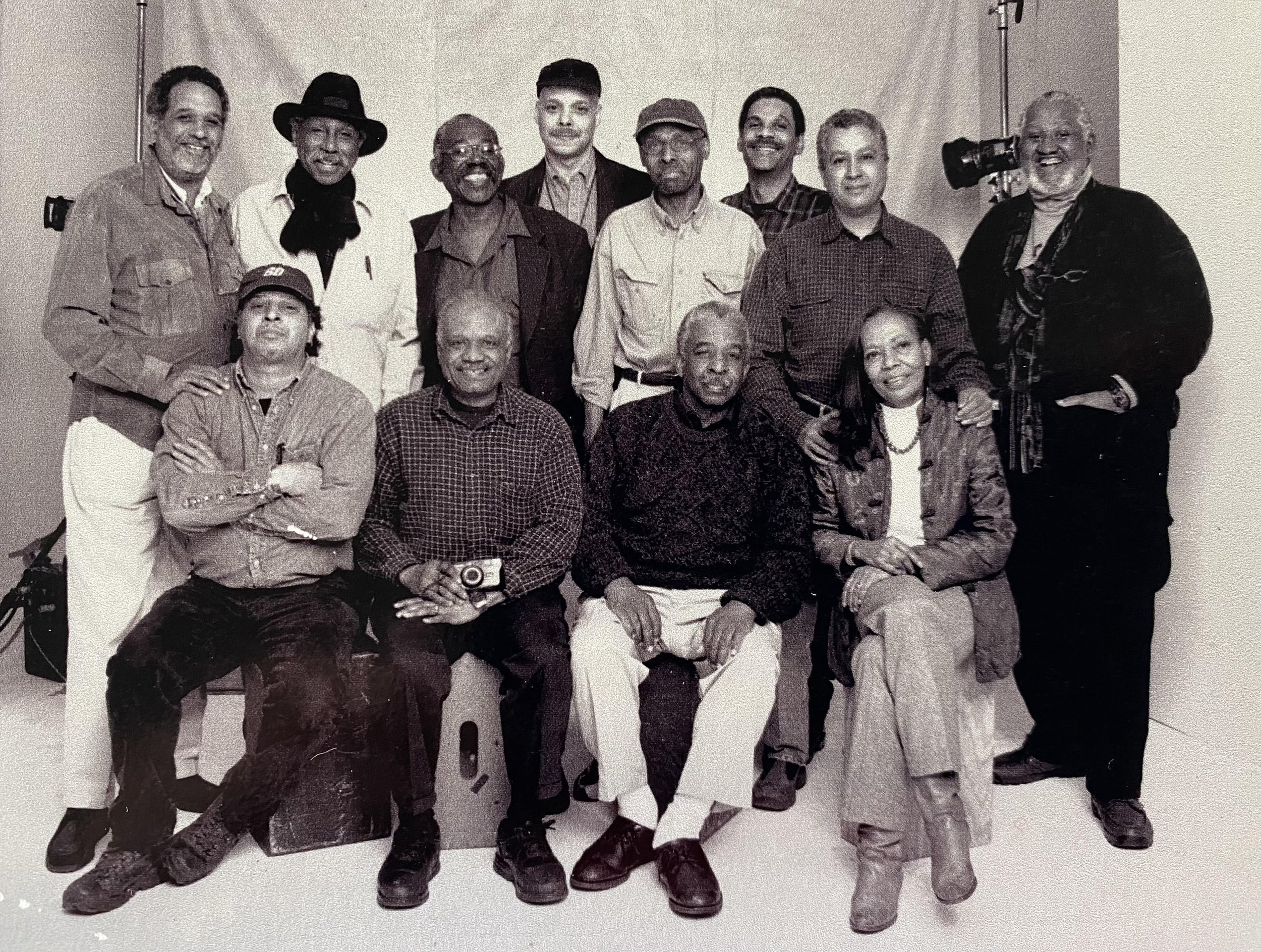About the Artist
Self-portrait, © Adger Cowans
Look, people can never know the artist. The artist in his work is the only place you can find him. All the rest of those things are invisible to you. Some artists do not even know themselves. So you have to deal with the artist and his work. The artist is in his work. That is where you find him if you want to find him. Who he is, how he feels, what he thinks—and even that is limited. The artist is a living thing. He is always changing and growing older.
- Adger Cowans
Adger Cowans began studying music at the age of nine. His talents on the trumpet led to a full scholarship to Capital University, but by that time, photography had become an engrossing interest. He turned down the scholarship to become one of the first African American students to earn a degree in photography from Ohio University. There he studied with Clarence H. White, Jr. and drew inspiration from photographers like Ansel Adams, Gene Smith, Alfred Stieglitz, Edward Weston, and Paul Strand.
Cowans furthered his education at the School of Motion Picture Arts and School of Visual Arts in New York City. As the first African American film still photographer in Hollywood, Cowans employed his camera on over thirty Hollywood sets, alongside directors like Francis Ford Coppola, Sidney Lumet, Spike Lee, and many others.
In 1958, Cowans joined Gordon Parks at Life Magazine. As a mentor, Parks encouraged Cowans to use his camera against racism and violence against Black people. It was a struggle that Cowans pursued further by joining the Navy, following in the footsteps of his great-great-grandfather, a Buffalo Soldier in the first all-black, U.S. Army peacetime regiment, and his cousin, Dr. Earl Sherard Jr., a Tuskegee fighter pilot who flew during the Second World War.
Self-portrait © Adger Cowans
While living in New York City during the 1960s, Cowans became a founding member of the Kamoinge Workshop, a civil-rights art collective that included photography icon Roy DeCarava, as the original founder, and other renowned Black artists: Anthony Barboza, Daniel Dawson, Louis Draper, Albert Fennar, Ray Francis, Herman Howard, James Mannas, Herbert Randall, Herb Robinson, Beuford Smith, Ming Smith, Shawn Walker, and Calvin Wilson. As a group, Kamoinge (a word borrowed from the Kikuyu people of Kenya, meaning “working together”) used their talents to undermine racist depictions of Black communities. The workshop was a driving force in the Black Arts Movement.
Adger Cowans © Mark Blackshear
AfriCOBRA © Unknown
Now an icon himself in the world of photography and fine art, Cowans’ photographs have been shown and collected by the African American Historical and Cultural Museum in Washington D.C., The Metropolitan Museum of Art, The Whitney, The International Museum of Photography, The Museum of Modern Art, Studio Museum of Harlem, Cleveland Museum of Art, Harvard Fine Art Museum, Detroit Art Institute, James E. Lewis Museum, The Getty Museum and the Whitney Museum of American Art.
His numerous awards include the Lorenzo il Magnifico alla Carriera, in recognition of a Distinguished Career at the 2001 Florence Biennale of Contemporary Art, a John Hay Whitney Fellowship, and the Martin Luther King, Jr., Caesar Chavez, Rosa Parks Visiting Scholars Award from Wayne State University and most recently, the Gordon Parks Choice of Weapons Award.
Kamoinge Workshop © Unknown
Later, Mr. Cowans became a member of AfriCOBRA (African Commune of Bad Relevant Artists), the 1968 South Chicago born collective founded by Jeff Donaldson, Jae Jarell, Wadsworth Jarell, Barbare Jones-Hogu, and Gerald Williams.




